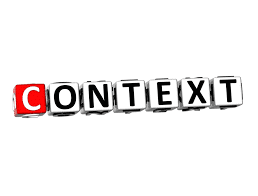
I have met many people in life who always think being a translator must be one of the easiest jobs there is in the world when in reality it’s really not. I have connections with a lot of translators, and I can’t tell you how they complain about the different challenges they go through. Just like in any line of work, there is always one main factor that makes working there a little harder than usual.
The thing about translation is that accuracy is key and there is nothing like word-to-word translation because that only messes up with the context of a document. With companies growing and expanding their services to different parts of the world they need for translation services has grown immensely and companies need their documents translated into different languages to cater to the different countries.
As much as most of us cannot understand what goes into the process of translation, we at least know that translation is the changing of content from one language into another. If though it doesn’t sound as complex as the description is, it is a very complex process that needs one to be professional and keen when doing translation works. The main thing that we cannot notice though is that in most languages, if not all, is that direct word-to-correlation is not present in languages. Rather, the manner by which people express themselves and the rules of grammar are different among cultures. A translator has to understand the subtleties of meaning and the nuances in a language. Words in one language may have several meanings and connotations in another language; therefore, a translator has to choose carefully the words to use so as not to slant the message of the translation. So many people seeking translation services always prefer to work with human translators as compared to machine/software translators.
There are about 7000 languages in the world today and this might not an absolute number because of how human beings interact we keep on coming up with different languages and thus adding it up to the existing ones. Different communities have different languages and dialects, which adds to the diverse dynamics that make up a language.
It is good to note that despite the large number of languages; more than half of the population of the world speaks only about 23 of them.
Below we will look at the different ways we can segregate languages based on their different origins:
- Asia has 2,300 language groups which are 32.4% of languages being spoken in the world and a whopping 4,015,367,857 number of speakers at 59.2%
- Africa has 2,143 language groups which make up 30.2% of languages being spoken and 980,437,811number of speakers at 14.5%.
- Pacific has 1,306 language groups which make up 18.4% of languages being spoken and 6,884,098 number of speakers at 0.1%.
- America has 1,060 language groups which make 14.9% of languages being spoken and 49,208,280 number of speakers at 0.7%.
- Europe has 2884 languages being spoken with 1,725,890,007 number of speakers at 25.5%.
Source: https://www.ethnologue.com/
From the information above, it’s good to note that the most spoken languages are from Asia, Europe, and Africa. These three continents comprise languages spoken more in the world than in any other place. Interestingly, the Pacific languages, and some languages of South and North American, only have an average of 1,000 speakers for each language. Shockingly there are countries that are rather small but have a lot of different languages being spoken. Some of these countries are Nigeria in Africa which has 526 languages, Indonesia which has 710 countries and Papua New Guinea which has 841 languages. This only shows that size does not really determine anything. Not forgetting India, which follows closely with 455 languages. Are you surprised that they speak 334 languages in the United States? China speaks 302 languages and residents of Mexico speak 292. Another African country, Cameroon, speaks 275, and the continent of Australia has 250. They speak about 228 languages in Brazil.
What Is Language?
Language is a system of conventional written or spoken symbols that human beings use to express themselves according to their culture. We use language for emotional release and imaginative expression, and to express identity and to communicate.
- Normally a language comprises words that create sentences that help in communication and that is regardless of whether it’s oral or verbal communication. For many people, their native and tongue languages are what they normally gain as their very first language of comprehension. This is usually the case depending on what language is being spoken to them a lot when they are young. They learn second languages in different levels of fluency as they grow up. They could grow up to be bilingual if both parents speak different languages.
- In translation, language really plays a major role, since the whole reason for this article was to talk about how languages and translation work line in line I will mention some languages hard for translators to deal with. A good translator is always one that has a fantastic relationship with languages and has a passion for the languages they work with. I say this because translation is working with a paired set of languages we expect a translator to translate from and into. It might be English and French, or French and Spanish. They are used to handling various kinds of translation work, from general translation to specific translations that make use of their skills and professional expertise. What makes up the higher level of difficulty or toughness of the languages is the lack of commonality with the languages most translators are familiar with.
Some of the hardest la bushes to translate are:
What Are The Most Difficult Languages To Translate In The World?
1. Mandarin Chinese
The language itself is hard to learn now, imagine having to translate it to another language or into another language. It is a language that has over 80,000 characters that have unique pronunciation and connotations, and this is because it is a tonal language. It’s a language that has one-word meaning different things depending on the tone used when pronouncing it. Being a language that needs a high level of understanding really gives translators a hard time if it’s paired with any other language out there. This only means that the translator has to be a native mandarine speaker or have a high level of comprehension for this language.
2. Arabic
I mentioned languages have different dialects that might make it hard for someone new to understand and keep up with them. Arabic is one of those languages which have a lot of dialects to work with. This makes it hard for transistors to work with it when paired with other languages. If it’s not enough that it’s a language where one reads from right to left, it is also a language that has one-word having multiple meanings, thus making it complicated. The dialectical influences on the language based on the location make translating Arabic difficult because it affects the pronunciation of the words. Translators must choose the right words because we can describe a single concept in different words, which can affect the context when the end-user is using a different Arabic dialect.
3. Thai
This a language that has no foreign influence, it is one in its original and purest forms. The only country where people speak Thai, and that has people fluent in English, is Bangkok and so understand why it is such a hard language to translate. It is very few schools out there that teach people the Thai language, if none. We write Thai in Khmer script, which is unrelated to any other language outside of its sphere. Like Chinese, Thai is a tonal language, and each tone conveys a different meaning. The Thai alphabet has 44 consonants and 18 vowels, which further makes it complicated to do translators to work with it. To further show how complicated this language is, all the letters are the same, there is no lower case or upper case and sentences do not end in full stops. There are no spaces between words either. We add space to identify the end of a sentence.
4. Korean
This is a language that has different grammar rules compared to any other language out there. This makes it hard for translators to work with it because it doesn’t even have a point of reference or something of the sort with any other languages in the world.
5. Japanese
Just like Chinese, Japanese also has thousands of characters. Its sentence structure and grammar differ from Western languages. The language translation mostly depends on the context and thus why it’s always advisable for any translator working with this language to have a perfect grasp and understanding of it.
Languages may make their translation a walk in the park or pain in the neck, depending on which languages are being paired. With that being said we have translated these languages before and even if not accurately then perfectly and thus why I say that it just takes a little effort from the translator to understand his or her paired languages before they work on them.







